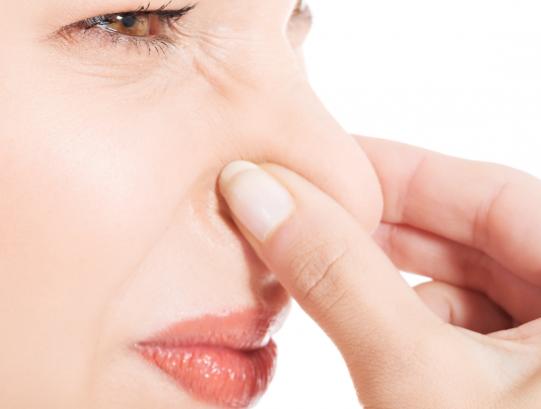Reprinted by permission of McGill University Office for Science and Society.
###
Some of these compounds, like allyl methyl sulfide from garlic, will turn up in your breath, pee, and sweat.
And then there are the volatile compounds like the androstenone steroid that is produced in the body from cholesterol, which in turn is synthesized from simple dietary components. This compound has received attention as a putative human pheromone based on the observation that it is found in boar saliva and is capable of triggering mating behaviour in plants. Androstenone is the hyped ingredient in many supposed aphrodisiacs, with essentially no evidence. An interesting feature, though, is that not everyone can smell androstenone, usually described as a musky or urine-like scent by those who are equipped by the right genetics.
Other smells can be traced to problems with metabolism. With Diabetes, a lack of insulin causes the body to use fat instead of glucose for energy, resulting in fat metabolites like acetone showing up in the breath and sweat. Trimethylaminurea is another example. A rare genetic disorder, Trimethylaminurea occurs when the body is unable to process trimethylamine, a breakdown product of choline, a common dietary component. Instead of being converted to trimethylamine oxide, which has no odour and passes through the urine, it is eliminated by passage through the skin where it produces a disturbing rotten fish odour.
Most compounds that are found in the sweat of healthy people are not volatile enough to produce a scent until they are broken down into simpler molecules by the roughly one thousand varieties of bacteria that inhabit our skin. The composition of this bacterial flora is determined both by genetics and environmental exposure. Every square centimeter of our skin is covered with roughly a million bacterial cells that churn out enzymes capable of breaking down the fats, proteins, and vitamins secreted by our sweat glands into smelly, volatile compounds. So if you find people are starting to keep their distance while at the gym, you may want to start thinking about using an anti-bacterial soap, since this will help to eliminate some of those nasty bacteria residing on your skin.
The specific scent of underarms is mainly due to compounds that fall into the thiol and carboxylic acid families. Thiols are very nasty smelling compounds, epitomized by the stench of skunk secretions. Carboxylic acids can also be malodorous, such as butyric acid, the smell of rancid fat. A specific thiol (3-methyl-3-sulfanylhexan-1-ol) and a specific acid (3-hydroxy-3-mehylhexanoic acid) have been identified as the major components of human sweat malodor, both arising from the action of bacteria on protein metabolites secreted by sweat glands. Interestingly, women liberate more of the onion-like acid than men, likely due to gender differences in bacterial composition.
The original McGill University OSS post can be found here.




